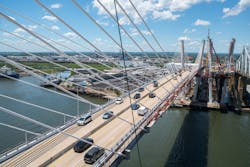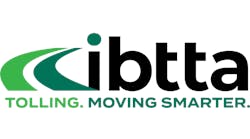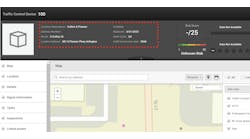By Erik Zuker, Contributing Author
In the coming years, bridges will experience increasing demands due to trends in freight as well as extreme weather driven by climate change. These demands are set against a backdrop of infrastructure deterioration as many bridges reach the end of their intended service lives.
When discussing our nation’s bridges, the American Society of Civil Engineers’ 2021 Report Card for America’s Infrastructure states that, “additional deterioration over the next 50 years will become overwhelming.” The report also points out that 42% of bridges are at least 50 years old and more than 45,000 are structurally deficient.
Many agencies have identified vulnerable assets within their transportation networks, but challenges, including budget constraints and environmental complexities, limit their ability to adapt. Technology, however, can enhance a multi-decade repair plan.
Properly applied, technology can help bridge owners safely extend the useful life of structures, gather information to better quantify vulnerabilities, and increase situational awareness to manage risk more effectively. This article will focus on ways existing technology can be leveraged to support these efforts.
The Role of a Resilience Framework
To understand and plan for future challenges, some agencies have developed a resilience framework. The Federal Highway Administration defines resilience as the ability to anticipate, prepare for and adapt to changing conditions and withstand, respond to, and recover rapidly from disruptions.
Vulnerability and resilience assessments at the individual asset level have become commonplace, but a network-wide resiliency analysis is still an area of improvement for most agencies.
Considering resiliency at the network level can bring hidden vulnerabilities to light. For example, it is well understood that major river crossings and signature bridges are key to a transportation network’s function. Smaller bridges, however, can play an equally critical role by maintaining a connection to isolated populations or allowing transport to essential facilities during an extreme weather event.
In recent years, key advances in technology have made it easier to collect, process, and analyze information. These advances include low-energy sensors, increases in battery power, wireless technology that makes conduit runs unnecessary, increases in cellular bandwidth, and the ubiquity of cloud computing resources to host and post-process large amounts of data.
The combination of these developments reduces the cost and effort required to monitor assets. This means bridge owners have greater access to sensing technology that can support resiliency efforts by quantifying structural behavior and increasing situational awareness during extreme weather events.
Technology to Enhance Hydraulic Resiliency
In the coming decades, bridges may face significant challenges in escalating hydraulic demands due to increased rainfall intensity driven by climate change. Increased flooding risks could place unprecedented demands on bridges of all types but appears to disproportionately impact smaller structures.
For some agencies, numerous bridges distributed across a wide geography may make it difficult – in both the planning and incident response phases – to predict and react to flood risk and high river levels. Increasing the resilience of bridges over water requires a multi-discipline approach from structural engineers, bridge inspectors, hydrologists, risk analysts, meteorologists, and emergency planners, just to name a few.
Because the immediate rehabilitation or retrofit of all bridges is not practical, agencies must consider multiple avenues to manage risk. While technology is only a part of the solution, bridge sensors can provide critical information to understand vulnerabilities, quantify demands and react in near-real-time to extreme weather events.
For a structure with hydraulic vulnerabilities, sensors may include tilt on the substructure and nearby soil, laser displacement to determine absolute position, and gauges to quantify river height and speed. Weather stations to capture rainfall amounts and high-resolution static cameras also are becoming increasingly common in monitoring installations.
The combination of these instruments allows owners to build historical data on local river behavior and the structure’s response to environmental factors such as temperature, live load, and soil saturation.
This historical data set can provide critical insight if utilized as part of a refined analysis to quantify a structure’s vulnerability and could even inform an agency’s future rehabilitation priorities.
During an extreme weather event, the sensors can be leveraged to provide situational awareness. The weather station can provide information on local rainfall while the river gauges can quantify the hydraulic demands. Tiltmeters and laser displacement sensors can determine if structural parameters are within normal limits or if there are potential instabilities.
Finally, a static camera can provide validation of the sensor readings and information on the river overtopping a bridge to allow informed decisions without exposing personnel to extreme weather.
This real-time data in combination can provide an agency with the information it needs to make decisions about the highest priorities for emergency inspectors and even temporary bridge closures.
These sensors are relatively inexpensive to purchase and deploy, allowing risk to be cost-effectively managed on a larger number of bridges. A proper data management plan that considers cybersecurity and quality will further enhance the strategy.
Technology for Overloaded Bridges
In the coming years, trends in trucking and freight also will change the demands on bridges. Several states already have increased their legal weight limits. Developments in e-commerce and supply chain logistics will modify trucking routes.
Additionally, connected freight (truck platoons) may increase demand on some bridges beyond codified loads. All of this is taking place while agencies rely on bridges designed for the trucks of decades past.
Currently, state agencies utilize a comprehensive system to issue permits and safe routing instructions to overweight trucks and assess old and deteriorated structures with load ratings (which determine allowable truck loads).
Bridges that cannot safely support the necessary load are posted. Postings are integrated into safe routing instructions for truck drivers. While this system is critical for maintaining public safety, bridge restrictions can have significant impacts on the resiliency of a freight network.
For a posted bridge with insufficient structural capacity, a refined analysis (often using computer models) may allow the owner to remove the posting. If this refined analysis does not yield the desired outcome, the owner can deploy sensor technology to load test the bridge, which is an established practice to understand the bridge’s actual response.
For these tests, bridge monitoring sensors are placed strategically to gather information while a truck of known weight moves across the bridge.
There are two broad categories of load testing. Diagnostic testing determines the response of the bridge to known loads. This information can be utilized to confirm assumptions and better understand the structure. The second category, proof testing, is used to establish a maximum safe load for a bridge.
This is accomplished by driving the maximum load (with additional weight as a factor of safety) over the bridge and confirming that response characteristics are within a predetermined range. While the practice of load testing has not changed significantly in recent years, the gains in battery power, wireless data transmission and computation power make it more cost effective than ever.
Load testing is an example of strategic technology deployment to better quantify risk and assess vulnerabilities. The insights it provides into a bridge’s behavior can be supplemented with inspection data, structural analysis, and engineering judgement.
By performing this review, an owner can identify an existing structure’s reserve capacity. This, in turn, may allow strategic deferral of rehabilitation or replacement without impact to the traveling public or the freight network.
Technology for Deteriorated Bridges
While the disciplines of asset management and bridge preservation have diligently guided our industry, the simple fact is that many bridges are beyond their intended service life. Rehabilitation or replacement of deteriorated bridges may not be feasible because of limited budgets and environmental complexities.
Agencies also may face challenges in the time required to plan, design and construct. These realities can impact individual assets as well as a transportation network’s overall resiliency.
Structural monitoring technology can assist in providing greater understanding of a structure’s condition and provide advanced warning when structural behavior changes. A fundamental task of structural engineers is to determine the load path, or the way that load is carried through a structure.
As elements within a structure deteriorate, this load path may change in ways that are not always apparent. Identifying and understanding load path changes can prove critical for structural engineers to make decisions on structural integrity and stability.
While engineers are analyzing a structure’s behavior, bridge owners must consider the risk that further deterioration will change the way the bridge carries load. Receiving real-time warning of behavioral change can be a key part of an agency’s risk management strategy.
By properly monitoring a structure and performing ongoing reviews of the data, an agency can safely maintain traffic on a structure despite deterioration.
Structural monitoring is only one tool in the toolbox, and it must be utilized alongside structural modeling and analysis, increased inspection frequency, potential load restrictions, and input from qualified and experienced engineers to establish safe operational parameters for each structure.
Looking Forward
Technology will continue to advance. Seamless data integration, 3D modeling, machine learning and digital twins are already demonstrating value and will certainly play key roles in our industry’s future.
But bridge owners need not wait. The tried-and-true, “off-the-shelf” technology discussed in this article can be leveraged today to help bridge owners manage risk amidst the inevitable challenges of the coming decades.
With the strategic deployment of these and other technologies, agencies can move toward greater resiliency, especially when considering assets in the context of the transportation network they support. R&B
Erik Zuker, P.E., is a structural engineer at HNTB.



